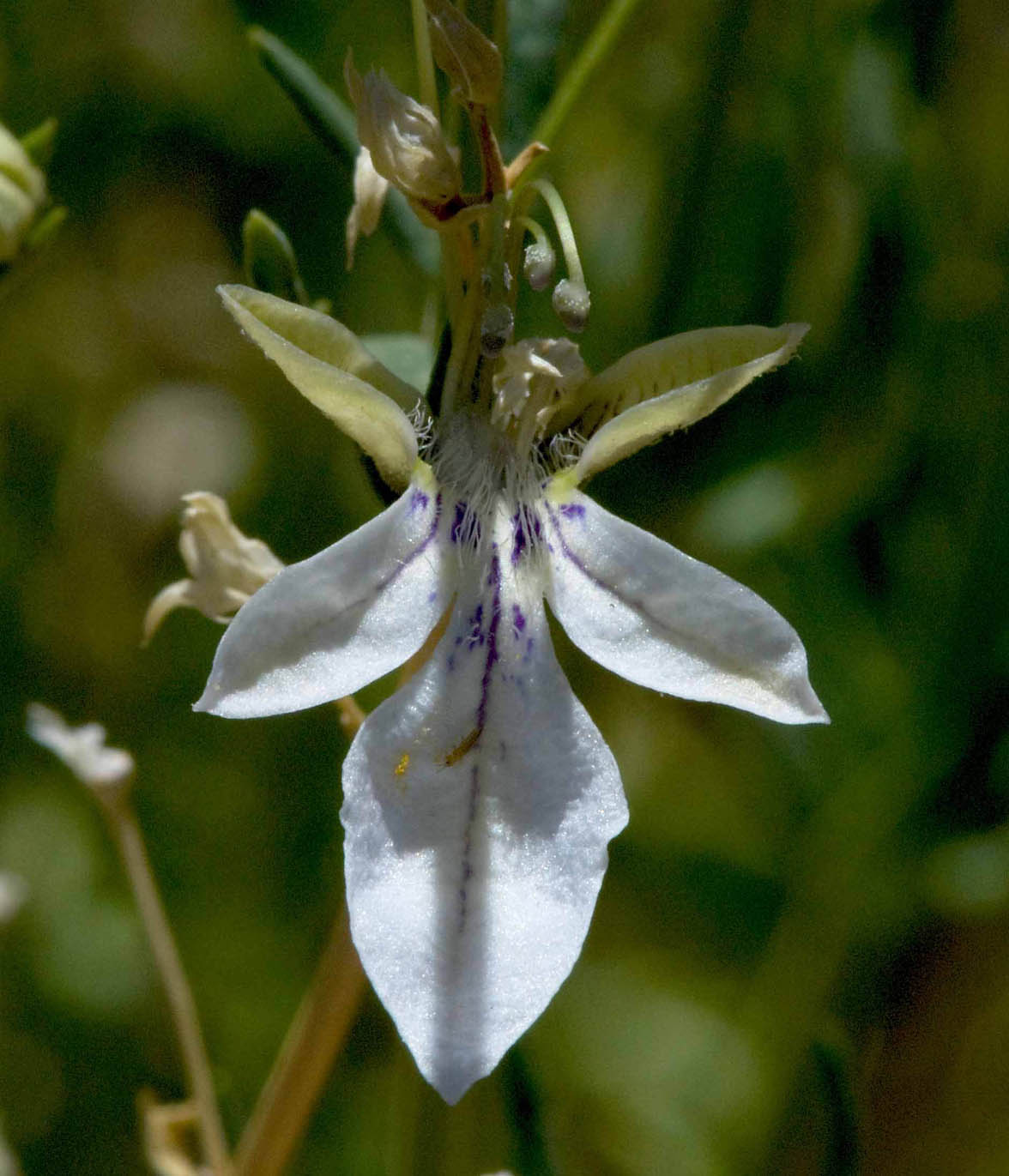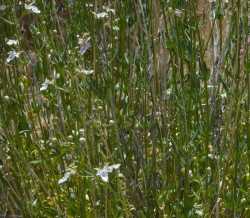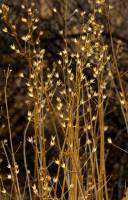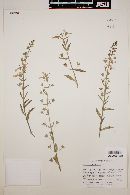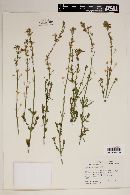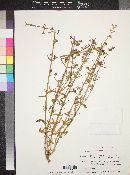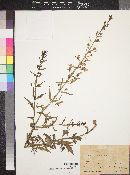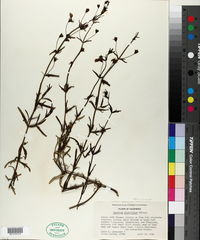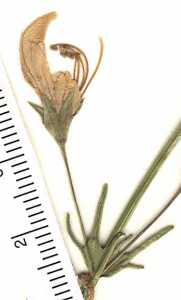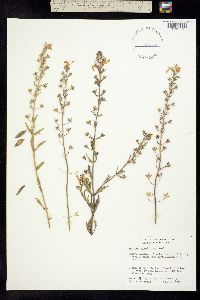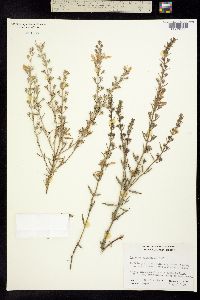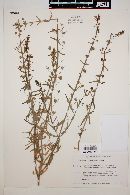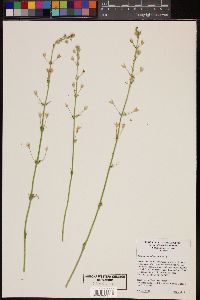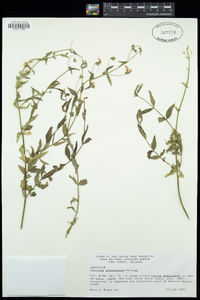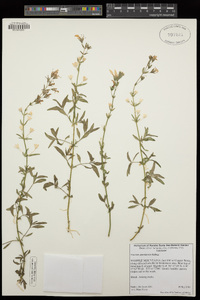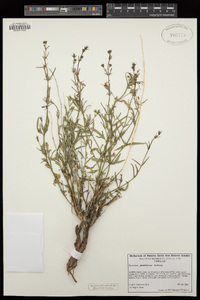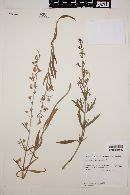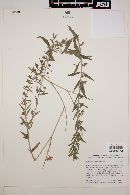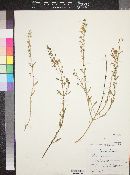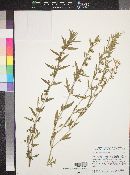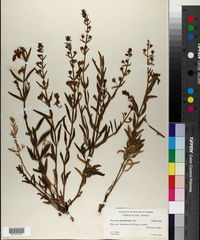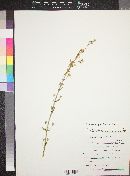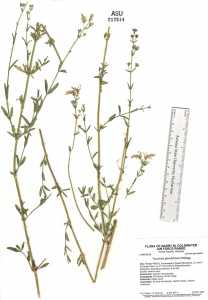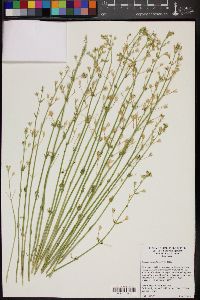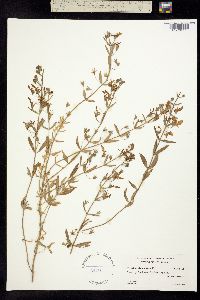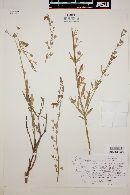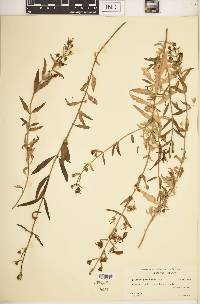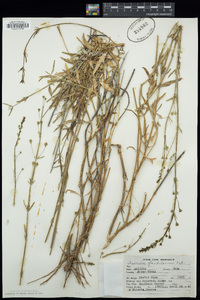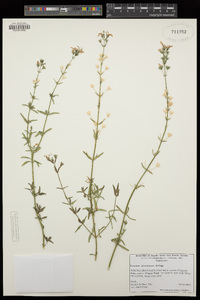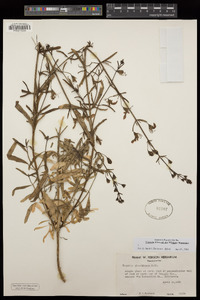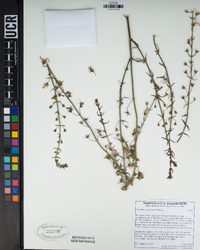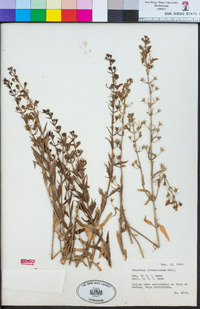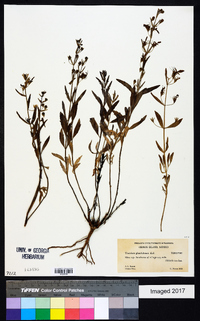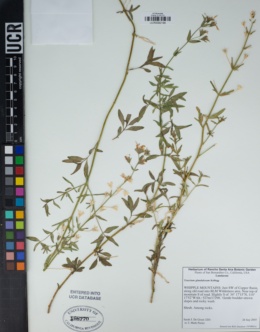Teucrium glandulosum
|
|
|
|
Family: Lamiaceae
Bearded Germander, more...germander, common germander
|
Plant: Suffrutescent or small shrub; stems to 1 m tall, variously branched Leaves: subsessile or tapering to a short, winged petiole; blades oblong, narrowly elliptic or lanceolate, overall 2-4.5 cm long, 0.3-1(-5) cm wide; margins with 0-3 large palmate lobes or pinnatifid to few-toothed or entire INFLORESCENCE: bracts deeply 2-3-lobed to simple and entire or 2-toothed Flowers: pedicels 1-3 cm long; calyx 5-9 mm long, the lobes slightly longer than tube, apiculate; corolla 5-20 mm long, white or bluish Fruit: NUTLETS ca. 2-3 mm long and wide, light brown to greenish-tan, the apices densely pubescent Misc: Sonoran Desert scrub, typically in canyons; 150-850 m (450-2800 ft); Jan-Jun (-Oct) REFERENCES: Christy, Charlotte M. 2003. Lamiaceae. J. Ariz. - Nev. Acad. Sci. Volume 35(2). Christy et al. 2003, Jepson 2012, Kearney and Peebles 1969 Duration: Perennial Nativity: Native Lifeform: Subshrub General: Herbaceous to shrubby perennials, to 1 m tall, stems 4-angled, ascending to erect, branched or not, woody or herbaceous, surfaces glabrous to short-hairy, plants with a woody base (suffrutescent). Leaves: Opposite, petioled, crenate to deeply lobed, lobes oblong, narrowly elliptic, or lanceolate, margins usually with 3 large palmate lobes or rarely pinnatifid to few-toothed or entire, blades overall 2-4.5 cm long and 0.3-5 cm wide, subsessile or tapering to a short, winged petiole. Flowers: White or bluish, large and showy, corollas 1-lipped, tube split above, lip 5-lobed, flattened, distal lobe larger than the lateral lobes, tips rounded, or lateral lobe tips acute to obtuse, corollas 15-21 mm long and densely puberulent inside, calyxes radial with 5 equal lobes, the tubes 2-4 mm long, with acute-tipped lobes 4-8 mm long with 10-veined surfaces, stamens 4, lower pair generally larger than the upper, style lobes generally equal, filaments short-hairy below the middle, infloresences generally spike-like, occasionally few-flowered, flowers subtended by leaves or bracts, with subtending bracts deeply 2-3-lobed to simple and entire or 2-toothed, flowers borne on pedicels 1-3 cm long. Fruits: Four nutlets 2-3 mm long and wide, light brown to greenish-tan, the apices densely pubescent. Ecology: Found on rocky soils, on slopes, in canyons, depressions, arroyos, and Sonoran Desert scrub communities, from 500-3,000 ft (152-914 m); flowering April-July. Distribution: Arizona, California. Notes: This interesting member of the mint family has flowers with 5 lobes; the middle, central lobe is the largest, generally white with purple streaks, the 2 lateral lobes to either side of the central lobe are also white, the outermost and smallest 2 lobes can be white or tinged a yellowish-green. The flowers are generally upward-facing, and have exposed reproductive organs. These plants have bright green, square stems with a sparse scattering of whorled leaves, and the plants tend to grow together in large groups. When dead, the straw-like stems and radial, acute-tipped calyx lobes are persistent and may help identify this species. Look for this species in Arizona in Mohave, La Paz, and Yuma counties. Ethnobotany: Unknown. Synonyms: None Editor: LCrumbacher2012 Etymology: Teucrium is named for Teucer, a Trojan king who used the plant as a medicine; or possibly for Dr. Teucer, a botanist and physician, and glandulosum means "provided with glands," referring to the secreting structures on the surface ending in hairs or other plant parts. |

